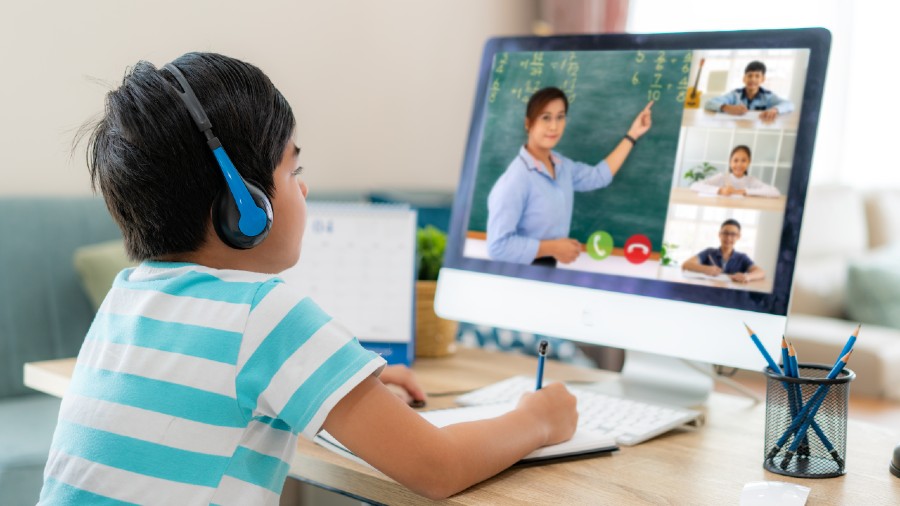What commenced as a family challenge to teach his cousins remotely within the US, Salman Khan’s Khan Academy has become a worldwide phenomenon in international education with 17 million customers. Based in 2008 in California, Khan Academy is a long open online path (MOOC) platform that frees training from fees.
In this interview with Business Line, Salman Khan, founder of Khan Academy, talks about the future of free online training, its plans, and the destiny of jobs. Khan Academy is now a not-for-profit organization that survives completely on donations and philanthropic funding. From Google to Tata Group, several big establishments have contributed to Khan Academy’s project of presenting free schooling to schoolchildren.

Tell us about the adventure of Khan Academy inside the ultimate one decade and some of its critical milestones. The first Khan Academy had nothing to do with videos. It became a website in which I created a software program that allowed my cousins to practice, and for me, because the coach, to look at how they were doing on that exercise, know-how what they had been getting properly,r and what they were getting wrong.
It was a chum’s notion that I make videos and add them to YouTube to supplement the practice sporting activities that I turned into creating for my own family. Without delay, I said it was no longer such a super ided “Youtube is for cats playing piano, no longer serious mathematics.” Still, I was given over that, and long story short, my cousins told me they appreciated me better on YouTube than as an individual.
Around 2009, I quit my daily activity. My spouse and I might want to attempt to set this up as a no longer-for-income for a year and live off of savings. It was an incredibly demanding time, but approximately ten months into that, we were ultimately given aid from people like Ann and John Doerr. Then,n rapidly after that, Google and Bill Gates got out of the woodwork.
The core of Khan Academy, even though many human beings partner us with films, is the concept that scholars have to get as a great deal exercise and remarks as they want and be able to research at their tempo so they don’t acquire gaps that turn out to be debilitating in a while. 2010, we hired educators, researchers, engineers, and designers to build the exercise platform. Over the past ten years, we have had approximately 100,000 users. In case you look at some of the current months, 17 million human beings take a few shapes of a learning motion every month at Khan Academy.
What is the task?
Our assignment is free global elegance schooling for absolutely everyone, anywhere. We’ve got an extended way to go because there are millions and tens of millions of learners, and we want to empower newbies of all ages, particularly in places like India. We have grown about 100-fold during the last decade, and I hope we can develop our impact a hundredfold over the following decade.
What aas Khan Academy carried out in India now, and what are the destiny plans?
In India, ever since we installed in 2016, our focus has been to ensure content alignment and comfort for as many schools and government partnerships as possible. Over the last few years, we have successfully aligned our middle and high-faculty grade math content with the Indian curriculum, with science quickly to observe.
We are also currently running on re-developing our content in four important nearby languages – Hinglish, Hindi, Kannada, and Gujarati. We have partnered with four government structures and nine personal college networks. Today, in India, approximately 100 colleges, 300 instructors, and 30,000 college students use Khan Academy’s resources for in-lecture roo, gaining knowledge every month.
With those partnerships, we have always labored ito put the lecturers and students up for success and enhance learning outcomes by using era in lecture rooms. The Government of Karnataka has partnered with us to make all our tutorial content material available in Kannada.
With the Government of Kerala, we’ve entered a 5-12 months partnership overlaying fou,775 schools, one lakh teachers, and 20 lakh students. In the primary year of collaboration, the kingdom would link Khan Academy’s content to its schooling portal, offer education to all teachers within the domain, and start a 20-school personalized mastering pilot. Learnings from this will be implemented statewide over the subsequent four years.
What is the destiny of online training? What role are Khan Academy and India going to play in this segment?
Platforms like Khan Academy allow each person to access an equal global education class. I’m excited that in places like India, the internet’s cost has long gone down dramatically, so I’m positive that access to education will even increase. Also, online schooling structures offer a shift from a set lock-step model to personalized, mastery-based guidance and exercise.
Within the next ten years, I assume that considerable extra people could havethe right tof entry to remarkable materials and schooling resources that wthatcanaree provably effective. We will also see a shift from fixed-paced guidance to personalized, mastery-based coaching.
The abilties of the future can be associated with AI and VR, so what will manifest in traditional publications?
Things like artificial intelligence and automation will make us think hard about what abilities will not be replaceable by robots. One’s competency will be the capability of people to empathize with others and around creativity.
If a scholar develops talents in AI, ML, and so forth, they may be very marketable. But that’s going to be a tiny sliver of society. Perhaps 1% is going to be actively operating on AI or VR. For the rest of society, the social talents of empathy, conversation, and creativity will be very critical.